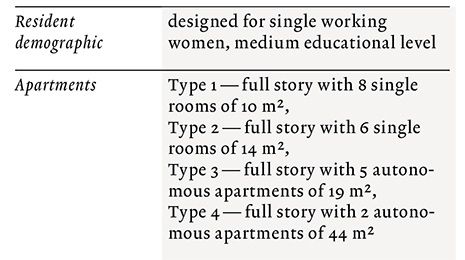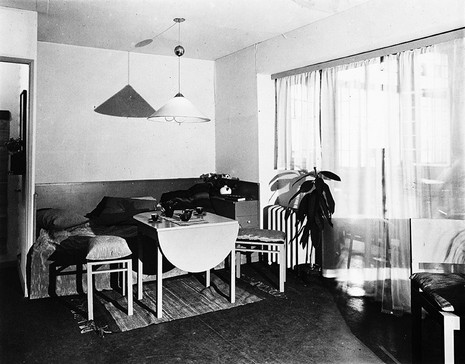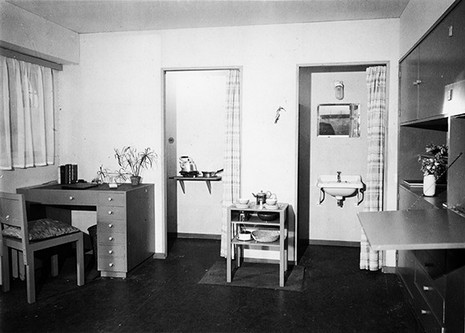Description
At the 1928 Home and Technology exhibition in Munich, Margarete Schütte-Lihotzky presented four designs for Hostels for the Working Woman, some units of which were constructed for an indoor presentation.[1] With these designs, Schütte-Lihotzky presented her idea that the new housing market user group of single employed women didn’t need to have segregated housing but could instead be given space in a conventional tenement with, for example, six floors and traditional family apartments.[2] Unlike the previously constructed Men’s and Women’s Hostels and Boarding Houses, Schütte-Lihotzky called for mixing single persons and families .
The draft design showed different sizes of single-person units, adapted from standardized family dwellings, that could be rented to single women, scaled according to income.[3] The first design consisted of a full floor that had eight single rooms with shared living spaces such as a sitting room, kitchen, toilets, wash areas, and a bathroom. For the second type, Schütte-Lihotzky designed six slightly larger single rooms, which in turn were supplemented by a sitting room, kitchen, and shared sanitary facilities. The last two designs had no collective facilities, instead 69 drafted as variously sized autonomous apartments; the third type had five apartments per floor, and the fourth had two apartments per floor. In her designs, Schütte-Lihotzky examined not only the possible construction of the apartment buildings and the facilities necessary for single-person apartments and collective living quarters, but also the affordability and renttoincome ratio for an average working woman.[4]
 Selected project data
Selected project data
 Type 3 apartment with seating and sleeping areas
Type 3 apartment with seating and sleeping areas
 Type 3 apartment design at the 1928 Home and Technology exhibition
Type 3 apartment design at the 1928 Home and Technology exhibition
 Type 3 floor plan with wash area and kitchenette
Type 3 floor plan with wash area and kitchenette
Footnotes
Originally published in: Susanne Schmid, Dietmar Eberle, Margrit Hugentobler (eds.), A History of Collective Living. Forms of Shared Housing, Birkhäuser, 2019. Translation by Word Up!, LLC, edited for Building Types Online.